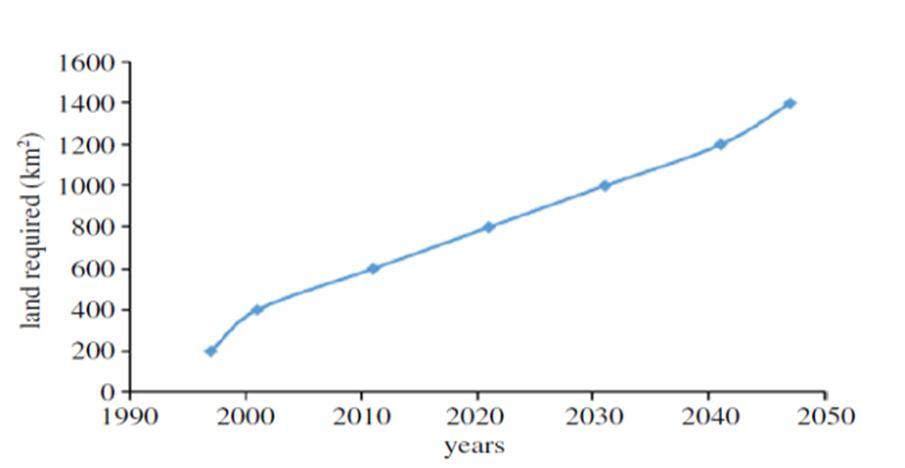
ISSN: 2321-9653; IC Value: 45.98; SJ Impact Factor: 7.538 Volume 10 Issue XII Dec 2022- Available at www.ijraset.com



ISSN: 2321-9653; IC Value: 45.98; SJ Impact Factor: 7.538 Volume 10 Issue XII Dec 2022- Available at www.ijraset.com

2
P.G.Student,1,
 Sarvesh Kumar Jain
Sarvesh Kumar Jain
2 1
Professor Civil Department, MITS, Gwalior (M.P)Abstract: Black cotton soil shows high swelling and shrinkage and less CBR value and strength due to presence of Montmorillonite mineral. Black cotton soil cannot be use for structural purpose in construction industry due to its expensive nature, therefore to control expensive behavior of the soil rise husk ash and silica fume is used in this experimental study. Rise husk ash used 0-15% by weight for observe experiment results and silica fume 0-12% by weight for observation of experiment results. Plasticity index, Free swell index of soil is decreasing with respect to RHA and SF addition and CBR value and shear strength of soil is increasing with respect to addition of RHA and SF . Optimum percentage of rise husk ash (RHA) and Silica fume (SF) observed as 12% and 9% respectively.
Infrastructures have two elements one is the super structure and another is sub structure known as foundation of the infrastructure, foundation is lower part of the structure rest over the soil, it transfer the total load to the foundation sub soil, therefore bearing capacity of soil must be sufficient for stability of structure.
1) Micro Structure of Soil: Soil having commonly three minerals Keolinite, Illite, and Motmorillonite. Montmorillonite having SiAl-Si seats with weak wander wall forces that retain maximum water and swell up to 250% , 2:1 clay mineral also called smectite.[5][7] Bentonite is common soil contain Montmorillonite mineral.
2) Black Cotton Soil: It is residual deposit of basalt and trap rocks, contain much amount of clay mineral, it contain montmorillonite mineral so swelling and shrinkage of this soil is more and shear strength of this soil is low. It shows the differential settlement due to swelling and shrinkage hence not prefer for structural purpose but depth of B.C.S(Black Cotton Soil) is less so this layer is removed for making structures.
3) Bentonite Soil: Bentonite soil is formed from volcanic ash, with high percentage of Motmorillonite mineral, Therefore it is also not prefer for the structural purpose due to montmorillonite mineral.
4) Solid Waste: In india, solid waste is rising vital problem per capita solid waste generation in india is 62 million tones per year(Calculation as per EIA 2017report ), this is big number with respect to the whole world production of solid waste, it can be control by make maximum utilization of solid waste in multiple industries to make sustainable future of India.

Image-01 Solid waste pollution
5) Silica Fume: Silica fume is waste powder produced in silica or ferrosilicate alloys, it is also known as micro silica fume, it is average size of 150nm say similar size of size of pozzolanic material or clay material, so it can be easy to use as fine filler material to any replacement of inert material. Due to its extreme fineness is used in many places like concrete, cement due to its pozzolanic behavior[6][7].It gives direct positive trend to slump value with respect to addition of silica fume in concrete mix.
6) Rice Husk Ash: Rise husk is produce refining of rice, it is natural and organic product and rise husk ash is produced by combustion of rise husk in the presence of Oxygen. Rice husk ash is use in creation of pozzonanic material as filler or additive.
ISSN: 2321-9653; IC Value: 45.98; SJ Impact Factor: 7.538 Volume 10 Issue XII Dec 2022- Available at www.ijraset.com
Singh and Das (2019)- This is experimental study on expensive soil stabilization by silica fume addition (10-100%) on the bases of plasticity index, free swell test, OMC test, UU test, and CBR test. It found to be OMC and UU test results are increasing while plasticity index is in decreasing trend with respect to addition of silica fume.

Kawther Al-Soudany(2019)- In this experimental analysis, fine clayey soil is treated with the silica fume. Observation of this experimental analysis are OMC and plastic limit are increasing and CBR values are also improving with respect to addition of silica fume.
Mostafa and Elgendy (2016)- In this experimental analysis RHA, silica fume and nano silica fume is used to control expensive nature of Sub grade soil. Maximum reduction in plasticity index is observed at 8% RHA and 10% silica fume, 8% RHA and 3% nano silica fume. Strength is also increasing with respect to addition of RHA.
Rêgo ,Nepomuceno (2015)- In this study characterizing the different varieties of residual RHA produced in Brazil and at investigating the microstructure of cement pastes with 20% replacement of ordinary cement by RHAs which presents high and low amorphous silica content. A broad array of techniques was employed in the characterization, such as X-ray diffraction (XRD), thermogravimetric analysis (TG), scanning electron microscopy (SEM), X-ray microanalysis, and porosimetry by mercury intrusion (PMI). The results demonstrate that RHA with low amorphous silica content, finely divided, reduces the calcium hydroxide content and the Ca/Si ratio of calcium silicate hydrate (C–S–H), and also refines the porous structure of the pastes. Residual RHAs with low amorphous silica content thus proved to be suitable mineral addition for cements.
Aparna Roy (2014)- In this experiment rise husk ash and cement is use to make sustainable the expensive soil, in this experimental analysis 10% increment in strength is observe at 6% cementing material use. Cementing material - cement and rise husk ash.
Musa Alhassan(2008)- In this experimental analysis laterite soil is stable by rise husk ash (RHA) 2-12%, addition of rise husk improve MDD and CBR values of soil sample at optimum values of rise husk ash at 6-8%.
Yang-Yin and Mahmudb(2006)- This study based on stabilization of lead content soil- In this experimental analysis leachiblity of lead is reduced with respect to addition of rise husk ash 0-30% and strength is also increase.
Hasim and Mahmud (2004)- In this experiment rise husk ash and cement is use to make sustainable the expensive soil, By X-ray diffraction method in this experimental analysis increment in strength properties is observe at 6-8% cementing material and 1015% rise husk ash use.
1) Goal Set Up (Target): Increase stability of Black cotton soil sample, reduce expensive nature of the soil on the bases of following parameters-
a) Liquid limit, Plastic limit and plasticity Index
b) Specific Gravity
c) Standard Proctor Test
d) Differential Free Swell (D.F.S.)
e) California Bearing Ratio (C.B.R.) Test

2) Origin Of Soil And Nature of The Soil: Black cotton soil is taken from Simaria Tal Dabra, Gwalior (M.P.) India. Basic nature of soil is non acidic with high expensive nature it swell up to 230% of it dry condition.
3) Sample Terminology and Design: Soil sample made with ceramic waste and rice husk ash as following-
4) Designing of soil sample: Soil sample made by variable value of ceramic waste powder as well as rise husk ash powder as following two stages in the first stage individual sampling of ceramic waste, after achieve optimum value of ceramic waste using rice husk ash in variable percentage with fix value of ceramic waste (optimum value).
5) Preparation and Properties Of Rise Husk Ash: Rise husk is burn in a pan in the presence of Oxygen up to converted in ash. It possesses following properties Water Absorption- 104% of its dry weight and Specific gravity is 2.05.
6) Properties of Silica Fume: Silica fume is a kind of Industrial waste and available in market at very cheap price therefore it is taken from a alloy industry. It posses following propertiesSpecific gravity = 2.2 and Water absorption 11.6% by its dry weight.
7) Nomenclature of Samples: Naming of different samples by some notation as-
RHA- Rice Husk Ash
SF- Silica Fume
BCS- Black cotton soil
ISSN: 2321-9653; IC Value: 45.98; SJ Impact Factor: 7.538 Volume 10 Issue XII Dec 2022- Available at www.ijraset.com

Rise husk ash used 0-15% by weight for observe experiment results and silica fume 0-12% by weight for observation of experiment results.
Table 1 (Nomenclature of sample made by BCS )


Name content
BCS-SF0-RSA0 Control sample with 0% SF and 0% RHA
BCS-SF3-RSA0 BCS sample with 3% SF and 0%RHA
BCS-SF6-RSA0 BCS sample with 6% SF and 0%RHA
BCS-SF9-RSA0 BCS sample with 9% SF and 0%RHA
BCS-SF12-RSA0 BCS sample with 12% SF and 0%RHA
BCS-SF9-RSA03 BCS sample with 9% SF and 3%RHA
BCS-SF9-RSA6 BCS sample with 9% SF and 6%RHA
BCS-SF9-RSA9 BCS sample with 9% SF and 9%RHA
BCS-SF9-RSA12 BCS sample with 9% SF and 12%RHA
BCS-SF9-RSA15 BCS sample with 9% SF and 15%RHA
Liquid limit is decreasing with respect to Silica fume and RHA percentage increase, decrement rate in liquid limit is more in case of Silica fume
Fig. 4.1:- Variation of liquid limit for BCS-Silica fume content
Liquid Limit Water content % SF % in BCS
Fig.4.2:- Variation of liquid limit for BCS-RHA content
ISSN: 2321-9653; IC Value: 45.98; SJ Impact Factor: 7.538 Volume 10 Issue XII Dec 2022- Available at www.ijraset.com




40
20
60 0 5 10 15 20

Liquid Limit 52 49 47 44 42 39 0 10 20 30 40 50 60 0 5 10 15 20
52 51 49 46 42 38 0
Fig4.3:- Variation of liquid limit for BCS and Silica fume-RHA content
Plastic limit is decreasing with respect to Silica fume and RHA percentage increase, decrement rate in plastic limit is more in case of Silica fume
Plastic Limit
Water content % RHA % in BCS Water content % 9% SF and varying RHA Water content % SF % in BCS

Fig 4.4:- Variation of plastic limit for BCS-SF content

ISSN: 2321-9653; IC Value: 45.98; SJ Impact Factor: 7.538 Volume 10 Issue XII Dec 2022- Available at www.ijraset.com

25
20
15
10
28 27 26 24 21 18 0
5
30 0 5 10 15 20
Fig.4.5 :- Variation of plastic limit for BCS-RHA content
Plastic Limit 28 25 24 22 21 18 0
Water content %
20
10
Water content % RHA % in BCS Water content % 9% SF and varying RHA SF % in BCS
30 0 5 10 15 20


Fig.4.6 :- Variation of plastic limit for BCS and Silica fume-RHA content
Plasticity index also show continue decrease graph with Silica fume addition while addition of RHA gives initial rise in PI then decreasing.





Plastic Limit 24 23 22 20 17 0 10 20 30 0 5 10 15
Fig.4.7:- Variation of plastic limit for BCS-Silica fume content
D. Specific Gravity Test


ISSN: 2321-9653; IC Value: 45.98; SJ Impact Factor: 7.538 Volume 10 Issue XII Dec 2022- Available at www.ijraset.com

Plasticity Index 24 24 23 22 21 21 20.5 21 21.5 22 22.5 23 23.5 24 24.5 0 5 10 15 20
24 24 23 22 21 20 0 5 10 15 20 25 30 0 5 10 15 20
Fig.4.8:- Variation of plastic limit for BCS-RHA content
Fig.4.9 :- Variation of plastic limit for BCS and Silica fume-RHA content
Specific gravity of the soil is increasing with addition of Silica fume and decreasing with addition of RHA in soil.
Water content % RHA % in BCS Water content % 9% SF and varying RHA Water content % SF % in BCS
Specific Gravity



Fig.4.10:- Variation of specific gravity for BCS-Silica fume content


ISSN: 2321-9653; IC Value: 45.98; SJ Impact Factor: 7.538 Volume 10 Issue XII Dec 2022- Available at www.ijraset.com

2.48 2.47 2.43 2.42 2.41 2.4 2.38 2.4 2.42 2.44 2.46 2.48 2.5 0 5 10 15 20
Specific Gravity 2.48 2.45 2.42 2.41 2.39 2.38 2.36 2.38 2.4 2.42 2.44 2.46 2.48 2.5 0 5 10 15 20

Fig.4.11:- Variation of specific gravity for BCS-RHA content


Fig.4.12:- Variation of specific gravity for BCS and Silica fume-RHA content
OMC
15
10
Water content % RHA % in BCS Water content % Water content %


5
9% SF and varying RHA SF % in BCS
16 15 13 12 15 0
20 0 5 10 15
Fig.4.13:- Variation of optimum moisture content for BCS-Silica fume content

ISSN: 2321-9653; IC Value: 45.98; SJ Impact Factor: 7.538 Volume 10 Issue XII Dec 2022- Available at www.ijraset.com

Water content % Water content %
20
15
10
16
19 18 20 20
5
23 0
25 0 5 10 15 20





Fig.4.14:- Variation of optimum moisture content for BCS-RHA content
OMC
RHA % in BCS 9% SF and varying RHA
Fig.4.15 :- Variation of optimum moisture content for BCS and Silica fume-RHA content
ISSN: 2321-9653; IC Value: 45.98; SJ Impact Factor: 7.538 Volume 10 Issue XII Dec 2022- Available at www.ijraset.com

Water content % Water content %
1.8
1.75
1.7
1.65
1.64
1.7
1.82 1.83 1.77 1.6
1.85 0 5 10 15


Silica fume % in BCS
Fig.4.16 :- Variation of maximum dry density for BCS-Silica fume content

MDD
1.64
1.63
1.62
1.61
1.6
1.59
1.58
1.57
MDD 1.64 1.56
1.62 1.6 1.6 1.59 1.55
1.56
1.65 0 5 10 15 20
RHA % in BCS
Fig.4.17:- Variation of maximum dry density for BCS-RHA content


ISSN: 2321-9653; IC Value: 45.98; SJ Impact Factor: 7.538 Volume 10 Issue XII Dec 2022- Available at www.ijraset.com



1.85
1.75
1.9
1.65
1.8
1.7
1.64
1.68
1.89 1.9 1.87 1.84 1.6
1.95 0 5 10 15 20
Fig.4.18 :- Variation of maximum dry density for BCS and Silica fume-RHA content
45
40
DFS Swelling %
35
30
25
20
15
10
MDD 47.05 41.23 38.01 29.16 29.02 0
5
9% SF and varying RHA SF % in BCS
50 0 5 10 15

Fig.4.19 :- Variation of differential free swell for BCS-Silica fume content

ISSN: 2321-9653; IC Value: 45.98; SJ Impact Factor: 7.538 Volume 10 Issue XII Dec 2022- Available at www.ijraset.com

Swelling % Swelling %
45
40
35
30
25
20
15
10
47.05 32.38 25.03 20.62 15.17 14.05 0
5
50 0 5 10 15 20
Fig.4.20 :- Variation of differential free swell for BCS-RHA content
45
40
35
30
25
20
15
10
DFS 47.05 30.24 19.13 12.32 9.32 7 0
5
DFS
50 0 5 10 15 20





RHA % in BCS 9% CW and varying RHA
Fig.4.21:- Variation of differential free swell for BCS and Silica fume-RHA content
ISSN: 2321-9653; IC Value: 45.98; SJ Impact Factor: 7.538 Volume 10 Issue XII Dec 2022- Available at www.ijraset.com

CBR%
5
4
3
2
1
2.27 2.685
4.624 4.752 3.1 0
6 0 5 10 15
SF % in BCS
Fig. 4.22:- Variation of CBR for BCS-Silica fume content

CBR
4
3.5
CBR 2.27 2.451
3
2.5
2.897 2.92


2
1.5
1
0.5
3.947 3.99 0
4.5 0 5 10 15 20
RHA % in BCS
Fig.4.23 :- Variation of CBR for BCS-RHA content

ISSN: 2321-9653; IC Value: 45.98; SJ Impact Factor: 7.538 Volume 10 Issue XII Dec 2022- Available at www.ijraset.com
5
4
3
2
1
2.27
3.857
4.787 4.79 4.8 3.82 0
6 0 5 10 15 20

Fig.4.24:- Variation of CBR for BCS and Silica fume-RHA content

1) Optimum percentage of Silica fume and RHA adulterant in CBC soil on the bases of above parameter given as maximum dry density, optimum moisture content, CBR value. Silica fume gives assent in dry density, and CBR value, up to 9%. RHA gives assent in dry density, CBR value with respect to percentage increment of Rice husk ash Combination of Silica fume and RHA gives assent in dry density, CBR value, up to 12% (RHA). Therefore optimum utilization of Silica fume and RHA is 9% and 12% respectively.
2) Solid waste reduction through rise husk ash and silica fume is major problem for Environment can also control by maximize the utilization in industries, therefore this research also contribute in EIA.
[1] A, Iravanian and Salah, Saber; " Using Silica fumes in Stabilization and Improving Soil Structures: A Review Study,2020,vol-03,p.p.76-89. https://www.researchgate.net/publication/347929641_Using_Ceramic_Wastes_in_Stabilization_and_Improving_ Soil_Structures_A_Review_Study
[2] Altug Saygılı;" Use of Waste Marble Dust for Stabilization of Clayey Soil",2015.https://www.researchgate.net/publication /28 5383573_Use_of_Waste_Marble_Dust_for_Stabilization_of_Clayey_Soil
[3] Amr S.El-Dieba and Dima M.Kanaanb," Silica fume powder an alternative cement replacement – Characterization and evaluation", Sustainable Materials and Technologies Volume 17, September 2018, p.p.213-221.https://doi.org /10.1016/ j.susmat.2018.e00063
[4] Abdelzaher E. A.; Mostafa, Mohamed., S. Ouf; and Mokhtar F. Elgendy;," Stabilization of Subgrade Pavement Layer Using Silica Fume and Nano Silica",journal of International Journal of Scientific &Engineering Research, Volume7, March-2016.
[5] Chiara Zanelli , Elena Marrocchino , Guia Guarini , Alice Toffano , Carmela Vaccaro and Michele Dondi, " Recycling Construction and Demolition Residues inClayBricks", journal of CNR-ISTEC, Institute of Science andTechnology for Ceramics(2020). https://doi.org/10.3390/app11198918
[6] Chhaya Negi, Chhaya; R.K.Yadav,R.K.;and Singhai,A.K;" Effect of Silica Fume on Engineering Properties of Black Cotton Soil"Journal of International Journal of Computational EngineeringResearch, Vol, 03.
[7] Chun-Yang, Yin; Hilmi Bin, Mahmud; Ghazaly, Shaaban;" Stabilization/solidification of lead-contaminated soil using cement and rice husk ash"Journal of HazardousMaterials science direct, (2006), V-13p.p. 1758–1764.

[8] Dincy, K Varghese1; and Tellma, John;" A Literature Survey on Addition of Silica Fume on Clayey soil"International Research Journal of Engineering and Technology (IRJET) Volume:05,2018.
[9] Easha,E.A; Hashim,A; and Mahmud,H"Stabilization of residual soil with rice husk ash and cement",journal of science direct, (2005),V-9, p.p. 448–453. www.elsevier.com/locate/conbuildmat
[10] Fernando Pacheco, Torgal and Said Jalali, "Construction and Demolition (C&D) Wastes",journal of elesewhere,2010,p.p.5173.https://link.springer.com/chapter/10.1007/978-0-85729-892-8_4
[11] IS codes of soil.
ISSN: 2321-9653; IC Value: 45.98; SJ Impact Factor: 7.538 Volume 10 Issue XII Dec 2022- Available at www.ijraset.com
[12] IS 2720 Part IV
[13] IS 2720 Part V
[14] IS 2720 Part V
[15] IS 2720 Part VI
[16] IS 2720 Part III
[17] IS 2720 Part VIII
[18] IS 2720 Part XI
[19] IS 2720 Part XVI
[20] IS 2720 Part X-1991

[21] J.B.Ozaa and Dr.P.J.Gundaliyab," Study of Black Cotton Soil Characteristics with Cement Waste Dust and RHA", Procedia Engineering Volume 51, 2013, Pages110-118 https://www.sciencedirect.com/science/article/pii/S1877705813000180
[22] Kumar Gupta,Chyan; and Sharma,Ravi kumar;," Influence of Micro Silica Fume on SubGrade Characteristics of Expansive Soil",International Journal of Civil EngineeringResearch,Volume5, Number 1 (2014), pp. 77-82.
[23] Kawther Al-Soudany;" Remediation of Clayey Soil Using Silica Fume",Journal of MATEC Web of Conferences 162,(2018). https://doi.org/10.1051/matecconf/201816201017 BCEE3-2017
[24] Minhas and V.U. Devi," Soil stabilization of alluvial soil by using marble powder",journal of elesewhere,2016 vol-03,p.p. 210-219 https://www.researchgate.net/publication/316547270_Soil_stabilization_of_alluvial_soil_by_using_marble_powder
[25] Musa, Alhassan;" Potentials ofrice husk ash for soil stabilization,Joulnal of science direct,2018, V-11, p.p.246-250. https://www.academia.edu/1596770
[26] Okagbue C.O, Onyeobi T.U.S,"Potential of marble dust to stabilizeredtropical soils for road" construction. J. Eng. Geol, 53(3-4): p.p.371–380, 1999.
[27] Pratyasha Singh; Dash,Hemanta; and Samantaray,Sandeep; "Effect of silica fume on engineering properties of expansive soil"journal of science direct,(2020),V-06,p.p. 917-924.
[28] Rêgo,J.S.H.; Nepomuceno,A.A.; Figueiredo,E.P.; and Hasparyk,N.P.;" Microstructure of cement pastes with residual rice husk ash of low amorphous silica content, journal of Constructionand Building Materials science direct, V-80, (2015) ,p.p. 56–68.
[29] Roy, Aparna; "Soil Stabilization using Rice Husk Ash and Cement" journal of International Journal of Civil Engineering Research,2014, V-5,p.p. 49-54. http://www.ripublication.com/ijcer.htm

